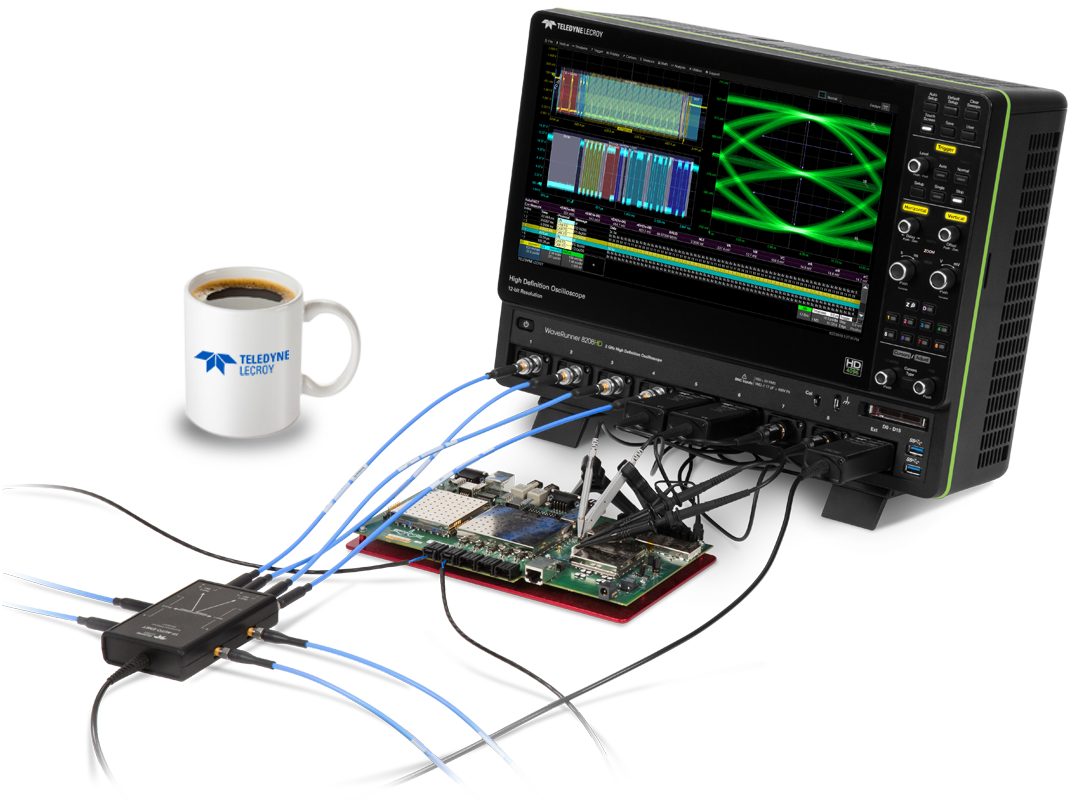
Part 1: What is the Difference Between Oscilloscope Resolution, Accuracy and Sensitivity?
Available On-Demand
Aired on January 25
In this webinar we explain oscilloscope resolution and how to optimize for resolution even if a high resolution oscilloscope is not being used. We explain how absolute oscilloscope voltage measurement accuracy is dependent on both resolution and noise, and how accuracy can change based on the oscilloscope sensitivity setting.
Part 2: What are Oscilloscope ADC Effective Bits and ENOB?
Available On-Demand
Aired on February 22
In this webinar we explain how analog-to-digital converters (ADC) work in oscilloscopes and how the ADC digital bit specification is impacted by the performance of the analog portion of the ADC. This is described in the effective number of bits (ENOB) specification, or simply referred to as effective bits.
Part 3: What is Oscilloscope Aliasing?
Available On-Demand
Aired on March 25
In this webinar we explain aliasing in an oscilloscope, what aliasing looks like on a real signal, and how to avoid aliasing by understanding the proper minimum ratio of oscilloscope sample rate to bandwidth.
Part 4: What is Oscilloscope Spurious Free Dynamic Range (SFDR)?
Available On-Demand
Aired on April 25
In this webinar we explain and provide examples of spurious free dynamic range (SFDR) measurements in an oscilloscope analog-to-digital converter (ADC). We also provide advice as to when to be concerned with SFDR performance and when the ADC spurs can be effectively ignored.
Part 5: What is Oscilloscope Offset and Position?
Available On-Demand
Aired on May 23
In this webinar we explain the difference between oscilloscope offset and position, how to measure signal DC offset with an oscilloscope, and how to utilize oscilloscope offset adjustments to simplify measurements on power rails and other floating signals. Lastly, we explain how applied oscilloscope DC offset reduces accuracy of the absolute amplitude measurement.
Part 6: What is the Difference Between a Real-time Oscilloscope and a Sampling Oscilloscope?
Available On-Demand
Aired on June 27
In this webinar we explain the difference between a real-time oscilloscope and a sampling oscilloscope in terms of their architectures and typical applications for each.
Part 7: How Does an Oscilloscope Probe Affect My Oscilloscope Gain Settings, Accuracy, Noise, and Dynamic Range?
Available On-Demand
Aired on July 25
In this webinar we explain what happens to the oscilloscope when a probe is connected to an oscilloscope input and how the oscilloscope operating characteristics are changed with the probe connected even if this is not made obvious to the user.
Part 8: When Do I Need to Deskew Channels or Probes on an Oscilloscope?
Available On-Demand
Aired on August 22
In this webinar we’ll explain what propagation delay is and what deskew does on a digital oscilloscope to correct for propagation delay differences between oscilloscope input channels and probes. We’ll also describe when you should spend the time to perform a precision deskew and when you can ignore this step.
Part 9: What is a Digital Phosphor Oscilloscope?
Available On-Demand
Aired on September 26
In this webinar we’ll explain what is meant by a digital phosphor oscilloscope (DPO), a phrase used by Tektronix to describe their fast update rate technology. We’ll also provide an overview of the benefits and limitations of fast update rate technologies.
Part 10: How Do I Use Roll Mode on My Oscilloscope?
Available On-Demand
Aired on October 24
In this webinar we’ll explain how and when you might want to use a roll mode acquisition on your oscilloscope in addition to providing some details on the benefits and limitations of using roll mode for long duration acquisitions.
Part 11: What is an Oscilloscope Eye Diagram?
Available On-Demand
Aired on November 21
In this webinar we’ll explain what an eye diagram is and how it informs us about serial data signal behaviors. Additionally, we’ll explain the various methods to create an eye diagram, from the simplest trigger-on-edge method to more robust methods using signal clock extraction and data slicing with bit overlay.
Part 12: How Do I Measure Jitter With an Oscilloscope?
Available On-Demand
Aired on December 19
In this webinar we’ll explain what jitter is and the various types of jitter measurements, with a brief introduction to the various methodologies to statistically analyzer jitter numerics, assess how jitter changes (or modulates) over time, and touch on serial data jitter measurement and extrapolation.
Access other Years
2021 Oscilloscope Coffee Break Webinars